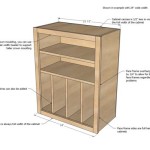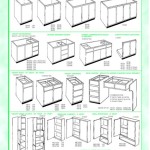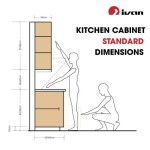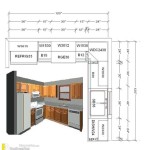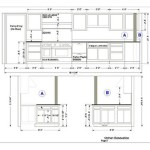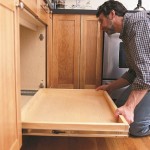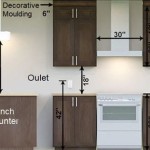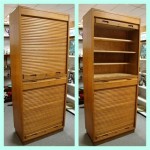Seedy Glass for Kitchen Cabinets
Seedy glass, also known as seeded, textured, or crackled glass, offers a unique aesthetic for kitchen cabinets. Its distinctive appearance, characterized by small air bubbles trapped within the glass, provides visual interest and a touch of vintage charm. This article explores the characteristics, applications, advantages, and disadvantages of using seeded glass for kitchen cabinetry.
Seedy glass is manufactured by introducing air bubbles during the glassmaking process. These bubbles, randomly dispersed throughout the glass, create a textured surface and distort light passing through it, resulting in a diffused and softened illumination. The size and density of the bubbles can vary, influencing the overall opacity and texture of the glass. Some manufacturers offer specific patterns or variations in bubble size for customized aesthetic effects.
The primary application of seeded glass in kitchens is in cabinet doors. It serves as a decorative element, allowing glimpses of the contents while obscuring complete visibility. This feature is particularly advantageous for displaying attractive dishware or glassware within the cabinets while subtly concealing less visually appealing items. Seedy glass can also be incorporated into pantry doors, offering a stylish alternative to solid wood or plain glass.
Beyond cabinet doors, seeded glass can be utilized in other kitchen applications. It can be incorporated into backsplashes, creating a unique textural backdrop for cooking areas. Incorporating seeded glass into pendant lighting fixtures provides a diffused and ambient light source. Furthermore, it can be used for shelves, adding a touch of elegance and visual depth to open shelving units.
One of the primary advantages of seeded glass is its ability to enhance privacy. The textured surface obscures the contents of cabinets, offering a desirable level of concealment without completely blocking visibility. This is particularly useful for storing items that may not be perfectly organized or aesthetically pleasing, while still showcasing select pieces.
The diffused light transmission provided by seeded glass creates a soft and inviting ambiance in the kitchen. The bubbles within the glass scatter light, reducing glare and creating a warm, gentle illumination. This can contribute to a more relaxed and comfortable atmosphere, enhancing the overall aesthetic appeal of the space.
Seedy glass offers a classic, timeless appeal that complements a variety of kitchen styles. It works well in traditional settings, adding a touch of vintage charm, and can also be incorporated into more contemporary designs for a unique textural element. Its versatility allows it to blend seamlessly with different cabinet finishes and colors.
While seeded glass offers numerous benefits, it's essential to consider potential drawbacks. Cleaning seeded glass can be slightly more challenging than cleaning plain glass. The textured surface can trap dust and grime, requiring more thorough cleaning practices. Using appropriate cleaning solutions and techniques can mitigate this issue.
Compared to plain glass, seeded glass typically comes at a premium cost. The specialized manufacturing process required to create the textured surface adds to the overall cost of the material. However, the unique aesthetic and functional benefits often justify the higher price for many homeowners.
The textured surface of seeded glass can make it more prone to showing fingerprints and smudges. This is especially true in high-traffic kitchen environments. Regular cleaning is necessary to maintain the desired appearance and minimize the visibility of fingerprints.
Seedy glass can offer varying levels of obscurity. While all seeded glass provides some level of privacy, the degree of obscurity can differ based on the size and density of the bubbles. It's important to choose the right level of obscurity based on individual privacy needs and aesthetic preferences. Examining samples in person can help determine the appropriate level of visual diffusion.
Different manufacturers may offer variations in the texture and appearance of seeded glass. The size, shape, and distribution of the bubbles can influence the overall aesthetic. It's advisable to compare different options from various manufacturers to find the desired style and level of texture.
When considering seeded glass for kitchen cabinets, consider factors like the overall kitchen design, desired level of privacy, and maintenance requirements. Carefully evaluating these aspects will help determine if seeded glass is the right choice for the intended application.
The installation process for seeded glass in kitchen cabinets is similar to that of plain glass. However, it's essential to handle the glass with care due to its textured surface. Professional installation is recommended to ensure proper fitting and minimize the risk of damage.

Cabinet Glass Inserts Architectural

Ideas And Expert Tips On Glass Kitchen Cabinet Doors Decoholic Cabinets

Thomasville Mullion And Glass Doors Anson

Kitchen Design A Tale Of 3 Kitchens Seeded Glass Cabinets Cabinet Doors

Seeded Glass Cabinet Doors Design Ideas

Sara S Kitchen Tour Part 1 Rustic Bathroom Remodel Bedroom Glass Cabinet Doors

Glass Kitchen Cabinets To Enhance Your Cooking Area

Glass Kitchen Cabinets To Enhance Your Cooking Area

Cabinets With Seedy Glass Twin Bay Of Traverse City

5 Types Of Glass For Kitchen Cabinets
Related Posts

